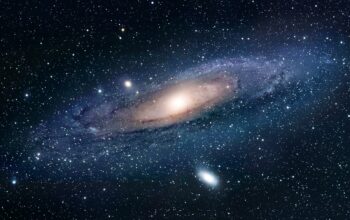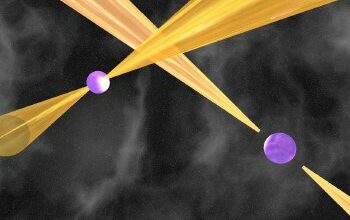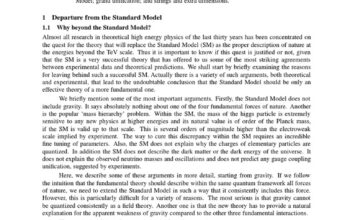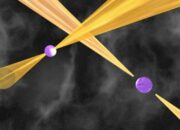The quest for the elusive Majorana neutrino has significant implications for understanding the fundamental structure of matter and the universe. The EXO-200 experiment plays a pivotal role in narrowing the search for these enigmatic particles, whose existence could provide insights into various areas, from particle physics to cosmology. This article endeavors to elucidate the complexities associated with Majorana neutrinos and the substantial contributions of the EXO-200 experiment in elucidating this pertinent field of study.
Majorana neutrinos, theoretically postulated by the Italian physicist Ettore Majorana in 1937, present a tantalizing possibility that neutrinos are their own antiparticles. This characteristic would fundamentally transform our understanding of particle symmetries and the nature of the universe. The intertwining of particle physics and cosmological phenomena implies that the detection of Majorana neutrinos could not only confirm or refute aspects of the Standard Model but also elucidate the mysteries surrounding dark matter and the asymmetry between matter and antimatter.
EXO-200, situated at the Waste Isolation Pilot Plant in New Mexico, employs a unique experimental approach to probe for Majorana neutrinos through the observation of neutrinoless double beta decay (0νββ). This rare process, characterized by the simultaneous decay of two neutrons into protons while emitting two electrons and no neutrinos, serves as a signature for Majorana neutrinos. Current theoretical frameworks suggest that if neutrinos possess mass and exhibit the Majorana property, they would facilitate this decay mode. Consequently, EXO-200 is engineered to detect the resultant electrons produced from such decay events by utilizing a liquid xenon environment, replete with high-purity xenon isotopes.
The instrumentation and technology employed by the EXO-200 experiment deserve meticulous elaboration. With an innovative design that integrates multiple detection mechanisms, the experiment achieves an impressive level of sensitivity and precision. The core of the detector consists of about 200 kilograms of liquid xenon, which serves as both the target and medium for monitoring decay events. The xenon isotopes are chosen judiciously, particularly the isotope xenon-136, which has been identified as a promising candidate for 0νββ decay experiments. The low background levels achieved in the remote cavernous location of the experiment facilitate the detection of exceedingly rare decay events that might otherwise be obscured by cosmic and terrestrial backgrounds.
Moreover, the dual-phase technology employed by EXO-200 enables efficient electron mobility through the liquid-gas interface, enhancing the detection efficiency dramatically. The resulting signals from these decay events are preserved and analyzed using advanced readout systems, ensuring a high degree of accuracy in the energy measurement of the emitted electrons. The culmination of these technological advancements positions EXO-200 as a formidable contender in the quest for Majorana neutrinos.
Data obtained from the EXO-200 experiment has already yielded crucial insights into the properties of neutrinos, including stringent limits on the effective Majorana mass. These limits are paramount in constraining theoretical models and guiding future experiments. By collaborating with other experimental efforts worldwide, EXO-200 contributes to a comprehensive understanding of neutrino physics and the interrelation between particle characteristics and cosmology. The insight gained from EXO-200 catalyzes further inquiries into neutrino masses, lepton number violation, and potential extensions of the Standard Model, such as supersymmetry or other grand unification theories.
In examining the broader implications of detecting Majorana neutrinos, it becomes imperative to consider their role in the universe’s evolution. The mass of neutrinos contributes to the overall energy density, influencing the dynamics of the universe’s expansion. Understanding their potential Majorana nature also intersects with the mechanisms behind baryogenesis, the process responsible for the observed predominance of matter over antimatter. This intersection of particle physics and cosmology underscores the profound significance of 0νββ decay in unravelling these cosmological mysteries.
The societal ramifications of unraveling these complex concepts must not be overlooked. Advancements in fundamental physics often inspire technological innovations that permeate various sectors. The sophisticated methodologies developed within experiments like EXO-200 stimulate progress in radiation detection technologies, cryogenics, and materials science. Moreover, fostering public interest in scientific inquiries related to such esoteric topics as Majorana neutrinos exacerbates the engagement of younger generations in the STEM fields, ultimately enhancing the scientific workforce’s resilience and diversity.
As new experimental strategies are proposed and implemented, the scientific community remains vigilant in addressing the potential challenges and limitations of the EXO-200 experiment and its successors. Future endeavors must consider the integration of emerging technologies, such as advances in quantum sensor technology and improvements in materials science. Collaborative international projects, such as the NEXT and PandaX experiments, complement and enhance the research landscape, broadening the reach and depth of neutrino studies.
In conclusion, the EXO-200 experiment represents a crucial step in the ongoing exploration of Majorana neutrinos. Through its innovative approach and cutting-edge technology, EXO-200 has already begun to shed light on significant aspects of neutrino physics, offering a new lens through which we can understand both the fundamental particles composing the universe and the broader cosmological phenomena that shape its evolution. The pursuit of answering whether Majorana neutrinos exist continues to engage physicists and cosmologists alike, representing a synthesis of high-level theoretical inquiry and empirical experimentation, ultimately driving the quest for knowledge in one of the most profound domains of physics.












